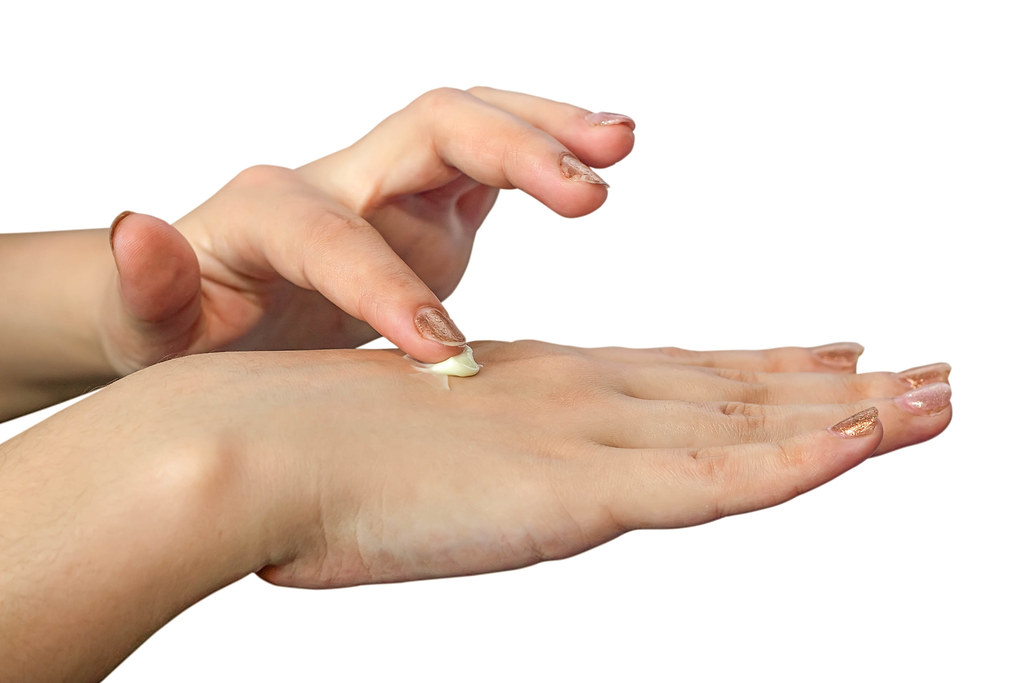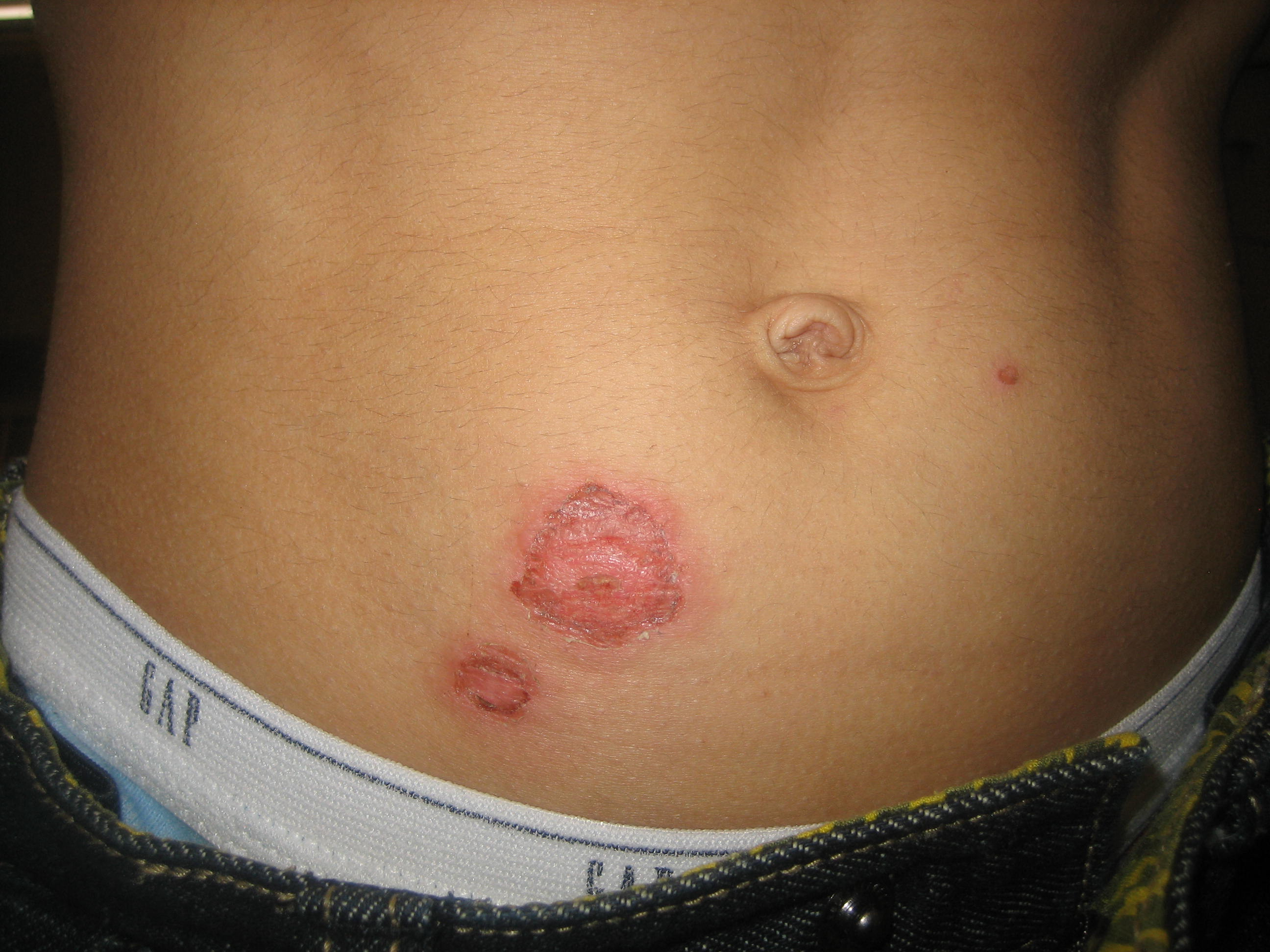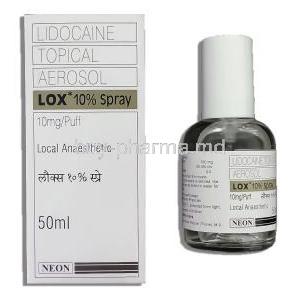Gentamicin Cream
- Introduction
- How Gentamicin Works
- Dosage and Administration
- Uses of Gentamicin Cream
- Off-label Uses of Gentamicin Cream
- Composition of Gentamicin Cream
- Side Effects of Gentamicin Cream
- Common Side Effects
- Interactions with Other Medications
- Warnings and Contraindications
- Careful Administration and Important Precautions
- Administration to Specific Populations
- Administration to Children
- Overdosage and Its Implications
- Storage Guidelines for Gentamicin Cream
- Handling Precautions
- Conclusion
Introduction
Gentamicin cream, a type of ointment, belongs to a larger group of antibiotics called aminoglycosides. It plays a role in treating different bacterial infections, particularly those caused by Gram-negative bacteria.
What is gentamicin cream?
Gentamicin cream is a type of cream that is made up of the antibiotic gentamicin sulfate. It is mainly used on the skin to treat infections. By applying it to the affected area, it works locally, reducing the chances of it being absorbed into the body and causing any side effects.

Cream Application
Historical background of gentamicin
Gentamicin was first discovered in the 1960s through the fermentation of Micromonospora purpurea. It quickly became a weapon against bacterial strains that were resistant to multiple drugs, providing hope during a time when bacterial resistance was on the rise. This antibiotic played a role in treating serious Gram-negative bacterial infections, like sepsis and certain respiratory infections. Its effectiveness and range were further confirmed when used alongside therapies.
How Gentamicin Works
Mechanism of action
Gentamicin, like aminoglycosides, works by attaching itself to the 30S subunit of bacterial ribosomes. This attachment interferes with the bacteria's ability to produce proteins correctly, resulting in the creation of proteins that weaken the integrity of bacterial cells and eventually lead to their death. Additionally, gentamicin has the ability to disrupt the layer of Gram-negative bacteria, making it easier for the drug to enter and affect these bacterial cells.
Target bacteria and spectrum of activity
One of the advantages of gentamicin is that it can effectively fight against a wide range of bacterial pathogens. Some of the targets are;
- Pseudomonas aeruginosa, which is known for its resilience and natural resistance to many antibiotics
- Escherichia coli (E. Coli) is often associated with urinary tract and gastrointestinal infections
- Klebsiella species, commonly found in respiratory and bloodstream infections
- Enterobacter species frequently linked to hospital-acquired infections.
However, it's important to note that while gentamicin works well against types of Gram-negative bacteria, its effectiveness against Gram-positive bacteria is limited. Therefore, combination therapy might be necessary for results.
Dosage and Administration
Recommended dosages for different conditions
The concentration of gentamicin cream is usually around 0.1%. The dosage depends on the severity and type of infection. Healthcare professionals typically determine the instructions, but here are some general guidelines:
- For superficial infections, Apply a thin layer to the affected area once or twice a day.
- It may be necessary to apply the cream more frequently for severe or extensive infections.
Application guidelines
To ensure that you use gentamicin cream effectively and safely, it is important to follow these guidelines;
1. Before applying the cream, ensure the infected area is clean and dry.
2. Use a dressing or clean fingertips to spread the cream over the infected site gently.
3. Unless advised by a healthcare professional, it is best not to use topical products along with the cream for optimal effectiveness.
4. Look for any signs of reactions or adverse effects and seek medical advice if you experience any.
Remember, following these guidelines will help you achieve the desired results safely and effectively using gentamicin cream.
Duration of treatment
The duration of treatment using gentamicin cream depends mainly on the type and seriousness of the infection. Typically, superficial infections require a treatment plan lasting around 7 to 10 days. However, if the infection is severe or not responding well to treatment, a longer duration of therapy may be necessary. It is crucial to follow the advice of a doctor to prevent resistance or recurrence of the infection.
Uses of Gentamicin Cream
Primary indications
Gentamicin cream(1) is a formulated medication that contains a powerful antibiotic called aminoglycoside. It is designed to be applied and has strong antimicrobial properties. This cream is a tool in the field of medicine as it effectively treats various skin conditions.
- One such condition is impetigo(2), which is a skin infection caused primarily by bacteria like Staphylococcus or Streptococcus. It is characterized by the development of pustules and crusts with a honey color.(3)
- Another condition that gentamicin cream can help with is folliculitis(4), which occurs when hair follicles become inflamed due to invasion. This often leads to the formation of bumps and blisters filled with pus.(5)
- Infected Dermatitis can also be treated, which is an inflammatory reaction of the skin that has bacterial overgrowth.(6)
Gentamicin cream can also be used as part of combination therapy alongside treatments recommended by clinicians. This approach enhances the effectiveness of the treatment plan, for various skin issues.
1. WebMD - Gentamicin Cream
2. NCBI - Impetigo
3. Medicine Plus - Gentamicin Topical
4. PubMed - Folliculitis
5. National Library of Medicine - Interventions for bacterial folliculitis and boils (furuncles and carbuncles)
6. Daily Med - GENTAMICIN SULFATE- gentamicin sulfate ointment

Child With Impetigo
Infections treated with gentamicin cream
Gentamicin cream is primarily used to combat infections on the skin but its effectiveness extends to various types of harmful organisms. Known for its ranging antimicrobial abilities, gentamicin cream is especially effective in treating infections caused by Gram-negative bacteria.
- Pseudomonas aeruginosa: This bacterium is found everywhere. Is notorious for its natural resistance mechanisms. It tends to cause damage in burn wounds and ulcerative lesions.
- Escherichia coli (E. Coli); While it usually resides in the gut certain strains can become pathogens and cause skin infections, particularly in people with weakened immune systems.
- Klebsiella pneumoniae: Although commonly associated with tract infections there are variations of this bacterium that can lead to skin issues. These instances require antimicrobial treatment.
- Enterobacter species; These bacteria are often responsible for hospital acquired skin infections in surgical wounds or catheter related cases.
Overall, gentamicin cream's strong ability to kill bacteria makes it an invaluable tool for healthcare professionals. It helps protect the integrity of the skin against a range of microbial threats.
Off-label Uses of Gentamicin Cream
Skin conditions treated off-label
Gentamicin cream is well known for its effectiveness against a range of bacterial infections, but it has also shown promise in treating other dermatological conditions.
- In cases where traditional treatments for eczema have failed, some patients have seen improvement when using gentamicin cream, especially when there is a secondary bacterial infection involved.
- Similarly, gentamicin cream has been suggested to reduce inflammation and address possible bacterial factors in rosacea, a complex skin condition characterized by persistent redness and visible blood vessels.
- Additionally, while fungal infections typically cause intertrigo, there are instances where bacterial co-infections play a role, and gentamicin cream can be an effective remedy.
These innovative applications highlight the versatility of gentamicin cream in addressing skin disorders.
Efficacy and research findings
In the evolving field of medical research, constant exploration often leads to unexpected discoveries. This has been the case with the use of gentamicin cream for purposes other than its originally intended use. Exploring its potential in areas has been exciting.
- Chronic Eczema; A study conducted on a group of patients found that using gentamicin cream resulted in a reduction in itching and inflammation compared to traditional treatments.
- Rosacea: Initial studies suggest a connection between certain bacteria strains and rosacea flare-ups. Patients who received treatment with gentamicin cream experienced a decrease in redness and the appearance of papules.
- Intertrigo: There are reports indicating that gentamicin cream may enhance healing and prevent recurrence in cases of intertrigo caused by bacterial infections.
However, it is important to note that while these findings are promising, comprehensive clinical trials are necessary to establish the effectiveness of off-label use of gentamicin cream. Healthcare professionals are encouraged to evaluate the risk-benefit ratio before endorsing such uses.
Composition of Gentamicin Cream
Active ingredients
Gentamicin cream mainly contains gentamicin sulfate, which is an antibiotic belonging to the aminoglycoside family. This particular antibiotic is well known for its effectiveness against a spectrum of gram-negative bacteria and certain types of gram-positive bacteria. Its mechanism of action in the world involves blocking protein synthesis, thereby impeding the growth of the specific bacteria and eventually eliminating them.
Inactive ingredients and their roles
While the main ingredient is crucial for the cream's purpose, we must not overlook the importance of the other ingredients. These components serve roles:
- Methylparaben and Propylparaben. They are commonly used as preservatives to prevent the growth of harmful bacteria and mold, ensuring the product remains safe and effective throughout its shelf life.
- White petrolatum: This ingredient helps moisturize and protect the skin, creating a favorable environment for the antibiotic to work.
- Mineral oil aids in hydrating the skin. Forms a protective barrier preventing the natural moisture from evaporating.
Although these ingredients may seem secondary, they are essential for maintaining consistency and safety in this cream.
Side Effects of Gentamicin Cream
Overview of potential side effects
Although Gentamicin has benefits, it is not without its potential side effects. These can vary from temporary skin irritations to more serious complications, particularly when used in large quantities or for extended periods of time.
How frequently they occur
From a perspective, it's worth noting that a significant portion of users may not experience any side effects at all. However, there might be a percentage who could encounter mild to moderate reactions. Severe side effects, though rare, should still be taken seriously, and people should stay informed about the possibility of their occurrence.
Common Side Effects
List of most common side effects
Some possible side effects in the area where the product is applied include redness, itching, swelling, dryness or flaking of the skin, and a burning or stinging sensation.
Recommendations on how to manage them
Experiencing these side effects can be concerning, There are ways to manage them effectively;
1. Take a break; It's important to stop using the product and seek advice, from a healthcare professional.
2. Moisturize: Using a moisturizer can help alleviate dryness or flaking symptoms.
3. Anti-inflammatory creams: Over-the-counter creams can be used to reduce redness and swelling. However, it's best to consult with a pharmacist or physician before using them alongside gentamicin.
4. Follow the guidelines; Make sure to stick to the prescribed amount and frequency of application in order to minimize the risk of side effects.
Interactions with Other Medications
Drugs that can influence gentamicin's effect
The effectiveness of gentamicin can be. Reduced when certain medications are taken together. Some notable examples include;
- Diuretics; Medications like furosemide or ethacrynic acid can increase the risk of gentamicin causing damage to the ears.
- Neuromuscular blocking agents: These drugs may worsen muscle weakness in patients with myasthenia gravis.
- Cephalosporins or penicillins; In certain cases, these antibiotics can intensify the harmful effects on the kidneys caused by gentamicin.
Medications that should be avoided while using gentamicin cream
It is very important to be cautious when using gentamicin along with medications. It is recommended to avoid the following:
- Using drugs that may have ototoxic or nephrotoxic effects at the same time.
- Taking medications that can change the properties of your skin barrier could lead to increased absorption and potential systemic effects.
- Any medication that your doctor or pharmacist has identified as interacting with gentamicin.
Always maintain communication with your healthcare provider and inform them about any other medications, supplements, or over-the-counter products you are taking.
Warnings and Contraindications
Specific conditions where gentamicin cream shouldn't be used
Gentamicin, an antibiotic belonging to the aminoglycoside family, may not be appropriate in all cases. There are clinical situations where its use is not recommended.
- These include patients who have a hypersensitivity to gentamicin or any of its components.
- Additionally, individuals with burns should avoid using gentamicin as their skin's increased permeability can lead to excessive absorption into the bloodstream.
- Lastly, it is important to note that gentamicin cream specifically targets infections and may not be effective against lesions caused by viruses such as herpes simplex.
Situations where use should be with extreme caution
Although not completely prohibited there are situations where it is important to be extra cautious when considering the use of gentamicin. One such case is Myasthenia Gravis, a condition in which gentamicin might worsen muscle weakness. Additionally, due to the kidney-damaging effects of gentamicin, it is crucial to administer and monitor the dosage carefully in individuals with renal impairment.
Careful Administration and Important Precautions
Monitoring requirements
It is important to monitor individuals undergoing gentamicin therapy carefully. Regular tests to assess kidney function, as well as checking the levels of gentamicin in the blood, are necessary to prevent any potential kidney or ear damage. Furthermore, conducting evaluations can act as a preventive measure against possible auditory harm.
Factors affecting gentamicin absorption and effect
Factors can influence the pharmacokinetics of Gentamicin. These include the surface area where it is applied. If the application area is extensive, it can improve absorption. Additionally, the condition of the skin plays a role. If the skin is damaged or inflamed, it can increase the drug's penetration through the skin. Lastly, using dressings can also enhance Gentamicin absorption.
Administration to Specific Populations
Administration to the Elderly
The pharmacological characteristics of the population often differ from other age groups due to physiological changes that occur as people age.
Dosage adjustments
Considering the possibility of decreased kidney function in adults, it is crucial to make careful adjustments to the dosage. Monitoring on a basis helps maintain appropriate levels of medication effectiveness while avoiding any potential harm from excessive doses.
Potential heightened side effects
Elderly patients may be more prone to experiencing the effects of gentamicin on their hearing and kidneys. This susceptibility is further worsened when age-related hearing loss or kidney decline is present at the time.
Administration to Pregnant Women and Nursing Mothers
Research findings on safety
Research conducted in times has not yet provided a definitive conclusion regarding the safety of gentamicin during pregnancy. Although studies on animals have raised concerns about harmful effects on embryos, there is limited and inconclusive data available for humans.
Recommendations during pregnancy and lactation
The careful consideration of gentamicin usage during pregnancy requires an evaluation of the risks and benefits. If it is decided to use it, close monitoring by a healthcare provider is essential. For breastfeeding mothers, it's important to be aware that the antibiotic may be passed into breast milk and could have implications for the baby.
Administration to Children
Age-specific dosages
When administering gentamicin cream to children, it is important to consider their age and adjust the dosage accordingly.
- Neonates and infants may need a dose because their kidneys are still developing, and they may not clear the drug as efficiently.
- Toddlers and school-aged children might require dosage adjustments based on their body surface area and overall health.
- Adolescents who are nearing adulthood in terms of parameters may be prescribed dosages similar to adults but with caution taken into account.
Safety profile in pediatric patients
The pharmacodynamic and pharmacokinetic characteristics of children differ from those of adults. Although gentamicin is sometimes prescribed for patients, it is crucial to be cautious because children may be more vulnerable to the drug's harmful effects on hearing and kidney function. It is essential to monitor their condition and strictly follow the prescribed dosage instructions without any exceptions.
Overdosage and Its Implications
Symptoms of overdose
Overdosing on Gentamicin is a situation in the medical field. It can result in complications such as severe hearing damage that may be irreversible impaired kidney function leading to acute renal insufficiency, dizziness caused by damage to the vestibular system, and respiratory depression particularly in cases where there is an increased neuromuscular blockade.
Immediate actions and treatments
If someone overdoses on gentamicin, it is crucial to take action. The following steps should be taken;
1. Stop giving gentamicin away.
2. Provide symptomatic care based on the patient's symptoms.
3. Consider hemodialysis as a way to remove gentamicin from the body quickly, particularly if the patient has kidney problems.
These interventions are essential in managing an overdose situation
Storage Guidelines for Gentamicin Cream
Recommended storage temperatures
To ensure that gentamicin cream remains effective and safe, it is recommended to store it at room temperature, which is generally between 15°C and 25°C. Extreme temperatures, whether cold or too hot, can potentially diminish the cream's therapeutic effectiveness.
Shelf-life and expiration considerations
Like any medication, gentamicin cream has a specific shelf life. Once it expires, not only can its therapeutic benefits diminish, but it could also potentially become harmful. Therefore, it is crucial to follow the expiration dates without any room for negotiation.
Handling Precautions
Best practices for safe handling
To ensure both effectiveness and safety, it is important to clean your hands before applying the product. Please be cautious. Avoid any contact with your eyes, mouth, and other sensitive areas. After using the product, make sure to seal the cap to prevent any potential contamination.
Disposal methods for expired or unused cream
It is important to dispose of unused gentamicin cream in an environmentally responsible manner. Instead of simply throwing it in the regular trash or flushing it down the drain, it is preferable to return the product to a pharmacy or a designated facility for medical waste disposal.
Conclusion
Using gentamicin cream, like any medication, requires following guidelines to ensure it is used safely and effectively. It's important for individuals to not only be aware of the instructions but also actively communicate with their healthcare providers and seek guidance if they have any doubts. This collaborative relationship between patients and their healthcare practitioners increases the chances of results while minimizing potential risks.












